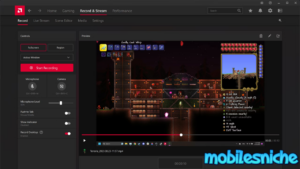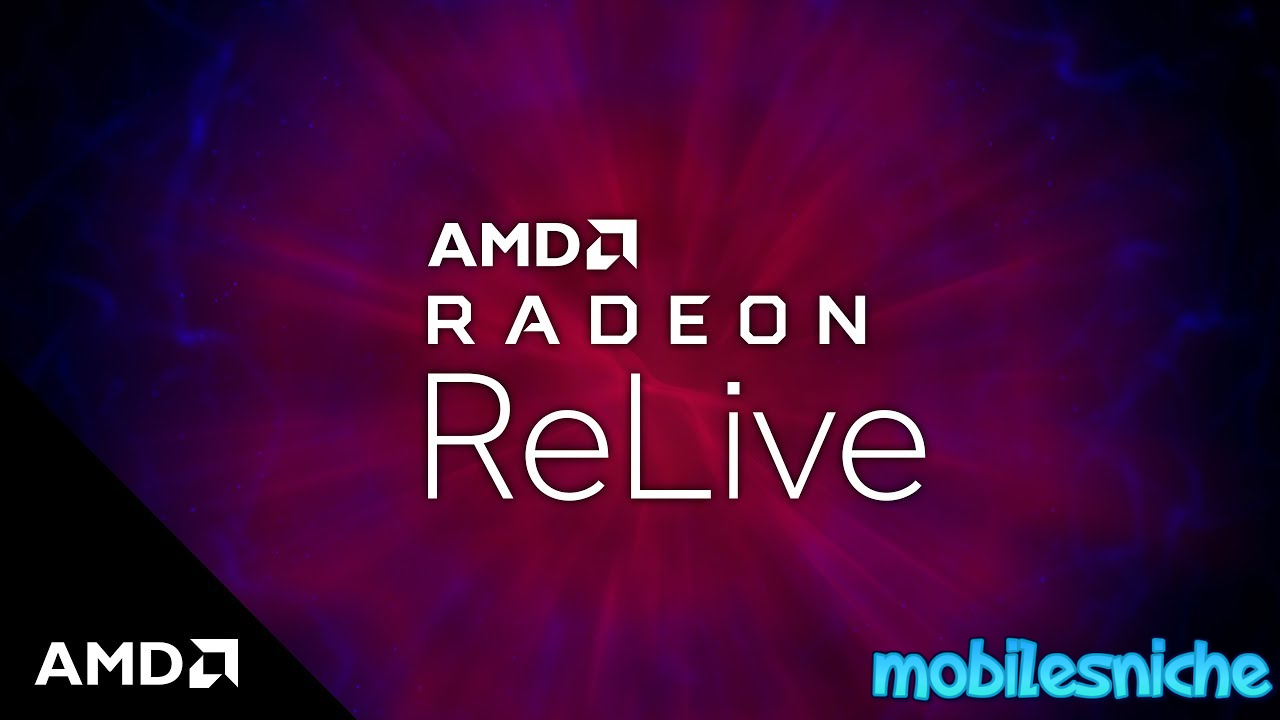When it comes to capturing and streaming your gaming moments, AMD Radeon ReLive is a game-changer. Launched as part of the Radeon Software package, ReLive helps gamers and streamers record, live stream, and share their epic gameplay with ease. With a functionality that rivals NVIDIA ShadowPlay and OBS, Radeon ReLive integrates seamlessly with your AMD GPU, offering a simple yet powerful solution for content creation.
ReLive isn’t just about recording; it delivers high-quality performance without compromising your game’s frame rate. From preset graphics profiles to real-time streaming capabilities, it covers all the bases. Whether you’re a pro gamer looking to share tips or a casual player wanting to showcase your highlights, ReLive provides the tools to make your content shine.
As streaming and sharing gameplay become more popular, understanding what makes ReLive stand out is essential. We’ll explore its features, compare it to competitors, and help you decide if it’s the right choice for your gaming and streaming needs. Stay tuned!
What is AMD Radeon ReLive?
AMD Radeon ReLive is a feature-rich tool integrated within AMD’s Radeon Software suite, designed to make capturing, streaming, and sharing gaming moments straightforward and efficient. It’s available for free to users with compatible AMD GPUs, offering capabilities that cater to both casual and professional gamers.
Capturing Gameplay
With AMD Radeon ReLive, capturing your gameplay has never been easier. Users can record their screen with various quality settings and formats to ensure their videos look great. Here’s how you can make the most of it:
- Supported Formats: ReLive supports capturing in popular formats like MP4 and H.264, which are widely used for video sharing.
- Quality Settings: Users can adjust the recording quality, ranging from 720p to 4K resolutions. This ensures flexibility whether you’re aiming for quick uploads or high-definition content.
To start capturing, simply press the defined hotkeys, and Radeon ReLive will begin recording your gameplay without compromising performance. For a detailed guide, check out AMD’s official page on video and streaming.
Streaming Features
Radeon ReLive extends its functionality to live streaming, enabling gamers to broadcast their gameplay to platforms like Twitch, YouTube, and Facebook Live. Here are the key streaming capabilities:
- Supported Platforms: It integrates seamlessly with popular streaming platforms, ensuring you can go live with minimal setup.
- Customization Options: Users can personalize their streams with various overlays, webcam feeds, and custom logos to create a unique viewing experience. Additionally, the software provides options to adjust bitrate and resolution, allowing you to find the perfect balance between quality and performance.
For a step-by-step tutorial on using these features, visit this comprehensive guide.
Sharing Content
Sharing your best gaming moments is made simple with Radeon ReLive. Users can directly upload screenshots and video clips to social media platforms or save them locally. Here’s what you can do:
- Social Media Integration: Instantly share clips and screenshots to sites like Twitter and Facebook directly from the ReLive interface.
- Editing Tools: Basic editing tools are included to help you trim and tweak your videos before sharing, ensuring that only the best moments are highlighted.
- Convenient Exports: Export your content in various formats suitable for different platforms, making it easy to share your highlights.
For more details on sharing content effectively, check out Radeon ReLive’s sharing guide.
AMD Radeon ReLive is a comprehensive tool designed to give gamers the power to capture, stream, and share their gaming experiences effortlessly. Whether you’re recording high-quality videos, broadcasting live, or sharing quick highlights, ReLive has you covered.
Performance Impact
Using AMD Radeon ReLive to capture and stream your gameplay can have various effects on your system’s performance. Let’s explore the key areas impacted by this software.
System Requirements
To optimally run AMD Radeon ReLive, your system needs to meet specific requirements. Here are the minimum and recommended requirements to ensure smooth performance:
Minimum System Requirements:
- GPU: AMD Radeon™ RX 400 series or later
- CPU: Intel Core i5-6265U or AMD equivalent
- RAM: 4GB or more
- Operating System: Windows 7 SP1 or later, 64-bit
- Display: 1080p resolution
Recommended System Requirements:
- GPU: AMD Radeon™ RX 500 series or newer
- CPU: Intel Core i7-7700 or AMD Ryzen equivalent
- RAM: 8GB or higher
- Operating System: Windows 10 64-bit
- Display: 4K resolution for high-quality recordings
Meeting these requirements ensures that your gaming experience remains unaffected while using ReLive.
Benchmarks and Testing
Testing the performance impact of Radeon ReLive involves running a series of benchmarks and gaming sessions with and without the software enabled. Various tests and user experiences provide insight into how ReLive affects performance.
Benchmark Results:
- Frame Rate Impact:
- Using Radeon ReLive can impact your frame rate depending on your system’s specifications and the game you’re playing. For example, in some cases, enabling ReLive might reduce the frame rate by 5-10 FPS.
- Linus Tech Tips reported games experiencing slight FPS drops when ReLive is turned on, predominantly due to the background recording processes.
- CPU and GPU Usage:
- ReLive requires some of your CPU and GPU resources, which can lead to increased usage and potentially higher temperatures. Users have noted significant CPU usage, especially during high-quality recording sessions.
- According to AMD Community, some users found that even high-end CPUs like the Ryzen 6600 experience increased load.
- Latency and Input Lag:
- Enabling Radeon ReLive can introduce minor latency and input lag. Gamers playing competitive multiplayer games may notice a delay in response times.
- Reddit users have observed that while recording, the latency is usually manageable but can become noticeable during intense gaming sessions.
User Experience:
- Many gamers find that using ReLive for casual or non-competitive gaming doesn’t drastically impact performance, making it a viable option for capturing high-quality gameplay.
- Consistent feedback highlights that playing in fullscreen mode while recording can cause more significant drops in frame rates compared to windowed mode.
By understanding these benchmarks and user experiences, you can better gauge if Radeon ReLive is suitable for your gaming needs. For more detailed discussions on the impact of Radeon ReLive, check out articles on Linus Tech Tips and AMD’s Community Forums.
Remember, while Radeon ReLive offers powerful recording and streaming capabilities, it’s necessary to ensure your system can handle the additional load without compromising your gaming experience.

Comparisons with Competitors
When choosing the best software for game capture and streaming, it’s crucial to see how AMD Radeon ReLive stacks up against its main competitors like NVIDIA ShadowPlay and OBS Studio. Let’s dive into the comparisons.
Ease of Use
The ease of use can make or break your experience with game capture and streaming software. Let’s see how Radeon ReLive, ShadowPlay, and OBS Studio fare:
Radeon ReLive:
- Radeon ReLive is known for its intuitive user interface. The setup is straightforward, especially for users already familiar with AMD’s Radeon Software.
- Quick Setup: As part of the Radeon Software, ReLive doesn’t require separate downloads or complex installations.
- User-Friendly: Clear menus and simple hotkeys make it easy to capture and stream without diving into extensive settings.
NVIDIA ShadowPlay:
- ShadowPlay is integrated with GeForce Experience, making it similarly straightforward for NVIDIA GPU users.
- One-Click Recording: The interface is user-friendly, allowing gamers to start recording with just one click.
- Easy Sharing: Built-in sharing options let users post clips directly to social media.
OBS Studio:
- OBS Studio has a steeper learning curve. It is open-source and provides highly customizable options, but it can be overwhelming for beginners.
- Advanced Features: While the interface isn’t as streamlined, advanced users appreciate the depth of control over their recording and streaming settings.
- Community Support: Extensive documentation and a strong community make it easier to learn over time.
Feature Set
Comparing the features offered by Radeon ReLive, NVIDIA ShadowPlay, and OBS Studio reveals their strengths and weaknesses.
Radeon ReLive:
- Recording and Streaming: Record in high-quality formats up to 4K resolution. Stream directly to platforms like Twitch, YouTube, and Facebook Live.
- Overlay Options: Custom overlays, including webcam and graphics, make your streams look professional.
- Instant Replay: Capture the last few minutes of gameplay with a simple hotkey.
NVIDIA ShadowPlay:
- Shadow Recording: Like ReLive, ShadowPlay offers shadow recording to capture recent gameplay.
- 4K Capture: Record up to 4K resolution at 60 FPS.
- Performance Monitoring: Allows gamers to see real-time performance metrics on screen while playing.
OBS Studio:
- Highly Customizable: Provides unparalleled customization, suitable for professional streaming setups.
- Plugins and Extensions: A vast array of plugins and scripts can enhance functionality.
- Multiplatform Support: Works across Windows, macOS, and Linux.
Performance Comparison
Understanding the performance impact of using each software is crucial for gamers wanting to maintain high FPS and smooth gameplay.
Radeon ReLive:
- Minimal Impact: ReLive is designed to minimize performance impact. According to AMD Community, the software uses a small portion of GPU resources, making it less intrusive.
- Benchmark Results: While there might be a slight drop in FPS, it remains minimal and manageable for most games.
NVIDIA ShadowPlay:
- Efficiency: ShadowPlay is also built to be efficient, offloading most of the recording tasks to the GPU, which helps maintain a smooth gaming experience.
- Performance Metrics: Tests have shown that ShadowPlay typically causes a small FPS drop, generally around 5-10 FPS, similar to ReLive.
OBS Studio:
- Resource Intensive: OBS can be more demanding. It uses more CPU resources, especially when using advanced features like multiple scenes and high-bitrate streaming.
- Customizable Performance: However, OBS allows for extensive customization to balance performance and quality, as highlighted in various user forums like OBS Forums.
In summary, while Radeon ReLive and ShadowPlay offer user-friendly interfaces and minimal performance impacts, OBS Studio stands out with its deep customization options but at the cost of higher resource usage. Choosing the right tool depends on your specific needs, whether it’s ease of use, a rich feature set, or customizable performance.
For detailed comparisons and further insights, check out ReLive Vs Shadowplay on Reddit and OBS vs. ShadowPlay for Gaming.
User Experience and Feedback
Understanding the user experience and feedback for AMD Radeon ReLive can give valuable insights into its capabilities and shortcomings. Here’s a look at what users are saying.
Positive Feedback
Many users have praised Radeon ReLive for several reasons. First off, it’s known for its ease of use:
- User-Friendly Interface: The integration of ReLive with AMD’s Radeon Software makes it straightforward. Users find the setup intuitive, and the hotkeys are simple to remember.
- Quality of Recordings: The quality of gameplay recordings is frequently lauded. ReLive allows for high-definition captures, with options to record in 720p, 1080p, and even 4K resolutions. This flexibility means you can choose the quality that best fits your needs without sacrificing performance.
Users also appreciate the reliability of the recordings:
- Stable Performance: Compared to some other capturing software, ReLive typically shows fewer crashes and bugs during recording sessions. This stability is often highlighted in user reviews on platforms like TechPowerUp.
Feedback also emphasizes the recording features:
- Instant Replay: A standout feature for many users is the instant replay function. By pressing a hotkey, you can save the last few minutes of gameplay, ensuring you never miss a fantastic moment.
- Low Resource Usage: Users have noted that ReLive doesn’t hog system resources, which allows for smooth gaming even while recording.
Negative Feedback
Despite the positive reviews, some users have experienced issues with Radeon ReLive, which mainly revolve around bugs and performance problems:
- Recording Glitches: Some users report glitches such as corrupted video files or instances where the software fails to save recordings. This issue is discussed in detail on AMD Community Forums.
- High CPU Usage: While many find it resource-friendly, others have noticed significant CPU usage, particularly when using features like instant replay. Users mention this increased load in threads like this one on AMD Community.
Other common complaints include:
- Streaming Limitations: While recording is smooth, some users feel that livestreaming doesn’t perform as well, especially when streaming to platforms like Twitch or YouTube. They often cite lower-than-expected quality or lagging issues.
- Compatibility Problems: Issues with specific games or updates causing ReLive to malfunction have also been highlighted. Certain users have had to seek workarounds or wait for patches from AMD.
Community and Support
The community and support around Radeon ReLive play a crucial role in resolving issues and enhancing user experience. Here’s what you need to know:
- Active Community Forums: AMD hosts active forums where users can share their experiences, ask questions, and get help from fellow gamers and AMD representatives. For example, discussions on the AMD Community cover a wide range of topics from troubleshooting to optimization tips.
- Customer Support: AMD’s customer support is generally responsive. Users can reach out via their support page for direct assistance. Additionally, the official Radeon Software page provides documentation and FAQs that are helpful for resolving most issues.
Overall, while Radeon ReLive has its share of criticisms, the robust support community and comprehensive resources available make it easier for users to overcome challenges and make the most of the software.
Tips and Tricks
Here are some expert tips and tricks to help you get the most out of AMD Radeon ReLive, from optimizing performance to troubleshooting common issues.
Optimizing Performance: Tips on settings and configurations to minimize performance impact.
To make sure AMD Radeon ReLive runs smoothly without dragging down your system performance, consider adjusting some key settings.
- Lower the Recording Resolution: If you’re experiencing performance issues, try lowering the resolution of your recordings. Instead of recording in 4K, opt for 1080p or 720p to reduce the load on your GPU.
- Adjust the Bitrate: A higher bitrate results in better video quality but can significantly impact performance. Aim for a balance that suits your needs. Typically, a bitrate of 10-15 Mbps for 1080p is a good starting point.
- Disable Unnecessary Features: Features like Instant Replay can be resource-intensive. If you don’t need them, turning them off can free up system resources.
- Optimize Graphics Settings: Adjust in-game graphics settings to ensure your game runs smoothly even while recording. Lowering settings like shadows and reflections can help.
- Utilize Hardware Acceleration: Ensure that hardware acceleration is enabled in the Radeon Software. This offloads processing tasks to dedicated hardware, improving overall performance.
Best Practices for Streaming: Share best practices for streaming with Radeon ReLive, including recommended settings.
Streaming with Radeon ReLive is straightforward, but to ensure a high-quality broadcast, it’s essential to follow best practices.
- Choose the Right Platform: Make sure you pick a streaming platform that meets your audience’s needs. Whether it’s Twitch, YouTube, or Facebook Live, each platform has its own optimal settings.
- Adjust Bitrate and Resolution: Stream at a resolution and bitrate that your internet connection can handle. For most users, 720p at 3000-4000 Kbps is a good balance of quality and performance.
- Enable Low Latency: If possible, enable low latency mode to ensure better interaction with your viewers, especially important for live chats and real-time feedback.
- Use Overlay Features: Take advantage of Radeon ReLive’s overlay capabilities. Add webcam feeds, custom logos, and real-time alerts to create a professional-looking stream.
- Test Your Setup: Before going live, do a test run. This helps identify any potential issues with audio-video sync, stream quality, and other settings, ensuring a seamless experience for your viewers.
For further tips on streaming optimization, visit the AMD official guide.
Troubleshooting Common Issues: Offer solutions to common problems users may encounter while using Radeon ReLive.
Even with a robust tool like Radeon ReLive, you might face some hurdles. Here are solutions to common issues:
- Recorded Audio Too Low: If your recordings have low audio levels, ensure that your microphone input is not too low and that the “Separate Microphone Track” option is unchecked. For more details, check this forum thread.
- High CPU Usage: If you notice high CPU usage, especially during Instant Replay, consider reducing the quality settings or disabling some features. This can ease the load on your processor.
- Video Glitches or Corrupt Files: Ensure your AMD drivers are up to date. Corrupted files and glitches often result from outdated or problematic drivers. Regular updates can solve many issues.
- Streaming Lag: If your stream is lagging, verify that you have a stable internet connection and adjust your streaming bitrate accordingly. Lowering the bitrate can help alleviate lag issues.
- Compatibility Issues: Some games might not play well with Radeon ReLive. If you encounter problems, try running the game in Windowed mode rather than Fullscreen. This can sometimes resolve compatibility issues.
For additional troubleshooting tips, explore the AMD Community Forums where users share their experiences and solutions.
By following these tips and tricks, you can enhance your Radeon ReLive experience, streaming and capturing your gameplay like a pro.
Conclusion
AMD Radeon ReLive stands out for its ease of use and rich feature set. It lets gamers capture high-quality gameplay, stream effortlessly, and share highlights without significant performance loss.
User feedback highlights its intuitive interface and reliable performance. Though some experience high CPU usage or occasional glitches, the strong support community and active forums help resolve most issues.
For gamers and streamers looking for a robust yet simple recording and streaming tool, Radeon ReLive offers excellent value. It might not have all the bells and whistles of advanced tools like OBS, but it delivers where it counts: performance, quality, and ease of use. Give it a try if you have an AMD GPU—you won’t be disappointed.
For more Slot Reviews like this, Visit our Website Here.


